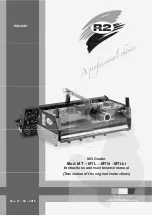
Page 9 of 13
_____________________________________________________________________________________________________________________________
BioGents AG • Bruderwöhrdstr. 15b • D-93055 Regensburg • Germany
tel..: +49 - 941 - 604 889 - 855 & 589 • fax: +49 - 941 - 943 3064 • www.biogents.com • www.bg-sentinel.com
(v .4.1)
6 Adding CO
2
Without CO
2
the BG-Sentinel traps
Aedes aegypti, Aedes polynesiensis
and
Aedes albopictus
, the
vectors of Dengue, Chikungunya, Filariasis or Yellow fever. Also some
Culex
species such as
Culex
quinquefasciatus
and
Culex pipiens
can be trapped.
The addition of CO
2
enables you to catch a broader range of blood seeking species and much
higher numbers of
Aedes aegypti, Aedes polynesiensis, Aedes albopictus,
and some
Culex
species.
CO
2
should be released by using BioGents CO
2
-nozzle (
Fig.9
), which is customized for the BG-
Sentinel trap.
Different sources of CO
2
can be used: the nozzle can be attached to a gas cylinder, any well
insulated dry ice container, or another CO
2
source that fits your preference placed away from the
trap.
Recommended flow rates of CO
2
gas are between 300 and 500 ml/min.
Fig. 10:
Attach the lower end of
the nozzle to the end
of a mounting pole
Fig. 9:
Release of CO
2
from a BG-Sentinel
CB: Catch pipe and catch bag
T: Suction tube F: Fan
Fig.11:
CO
2
nozzle ready to use
Nozzle for the release
of carbon dioxide
Carbon dioxide
supply tube































